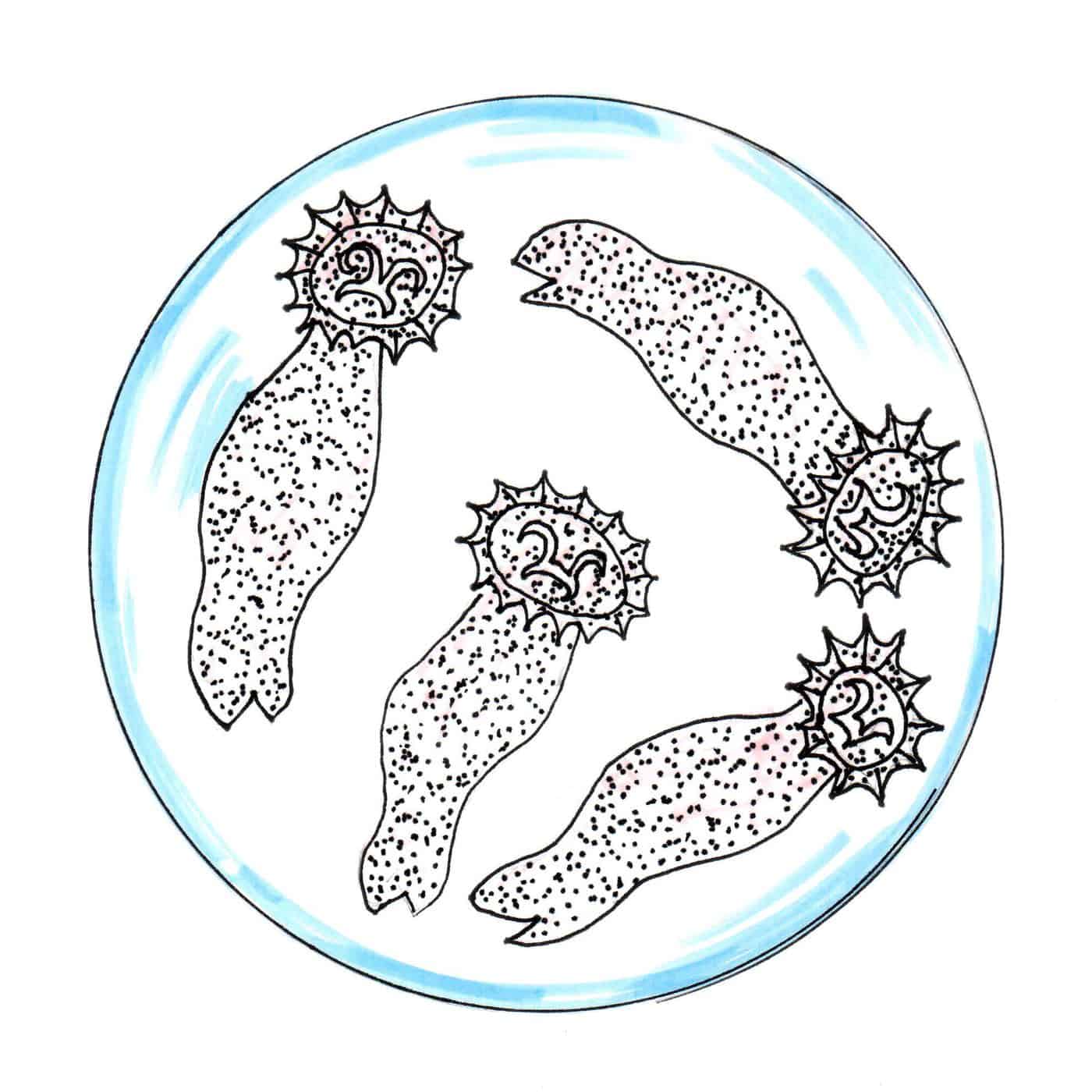Every spring is koi season at Aquatic Veterinary Services! Here are our most common spring diseases in koi we can expect to see and the signs you should be aware of if any of these diseases are present in your pond.
5. Carp Pox
Although not THE koi herpes virus, carp pox is also known as cyprinid herpesvirus-1. It causes lesions within the skin that can look like “candlewax drippings” and “frosting” along the leading edges of the lips and fins. In cooler water temps, the lesions can be severe, but as the water warms, the fishes’ immune system and skin replacement can make the lesions almost vanish. Only in severe cases will a fish start to be compromised to secondary infections.
Since this is a herpes virus, there is no treatment or cure. If you have one fish in your pond that is showing these clinical signs, all of your fish have already been exposed. Only immune-compromised or stressed individuals will show clinical signs.
This is a very common disease for us to diagnose. Unless the case is severe, the fish will have good health, but will not be very pretty.

4. Monogenean Treamatodes (aka ‘flukes’)
These irritating little worms are most commonly gyrodactylus or dactylogyrus species. They can infiltrate the skin or gills and cause severe irritation for any fish. You will most commonly see signs of skin irritation, with increased redness on paler fish, bruises or missing scales.
Since fish cannot itch themselves like a cat or dog, they exhibit a behavior known as “flashing.” Usually, you will see your fish throw themselves sideways along the sides or bottom of their pond in an attempt to dislodge these irritable invaders.
Severe infestations can cause the gills to shut down and death to occur. There are many over-the-counter medications that will claim to take out these bugs. Please keep in mind that these medications are not controlled or overseen by any government checks. A veterinarian can prescribe a prescription-strength medication to take care of your problem safely and easily.

3. Gondal Sarcomas
Unfortunately, we often do not catch these tumors in time for surgery. Females between 8-12 years of age seem particularly more susceptible. Since 2019, all our pond packages include ultrasound screenings for all females since we are trying to catch this disease early.

These space-occupying tumors most likely start from female gonadal tissue. By the time they are visible externally, most of the internal organs are failing. These masses are very hard to catch, which is why our new screening system will be started this year. If caught early, the tumor can be removed via surgery.
2. Trichodina
This aggressive “scrubbing bubble” is often aided by our #1 spring diseases in koi. We tend to see this parasite most commonly, often displaying the same “flashing” behavior as our monogenean friends.
This parasite is easily treated by our prescription-strength medication. Over-the-counter medications do not work well against this parasite for some reason.

Common Freshwater Fish Parasites Pictorial Guide: Motile Ciliates
1. Water Quality
I know it is not a “disease,” but poor water quality is the #1 diagnosis for disease I see. Having poor water quality makes all spring diseases in koi WORSE, including bacteria, fungi, parasites and other pathogens.
Water quality is directly linked to fish health. Like the air we breathe, the water a fish swims in has a direct effect on their overall immune function. Before the spring diseases come, get your maintenance routine overhauled and test your water chemistry regularly to make sure your fish have their best chance for a healthy spring.


I had one coy resting sideways , now two fish are doing this. Second one looks pretty ill. They usually set right way when swimming but not having real problems help please
For veterinary assistance, please visit https://fishvets.org or https://wavma.org.
Have one large butterfly koi who has been staying on the bottom of the pond gulping gills seem to be working no signs of fungus or parasites, the fish will swim if disturbed. all other fish are doing fine. suggestions
If you are concerned about your fish, please call (831) 278-1081 for veterinary assistance. If you are outside California and Nevada, please visit https://fishvets.org or https://wavma.org
We have the same thing with one of our koi this spring. A very large butterfly koi. How did yours make out? I’m concerned she may be dieing?
If you are concerned about your fish, please call (831) 278-1081 for veterinary assistance. If you are outside California and Nevada, please visit https://fishvets.org or https://wavma.org
Pingback: Stories of Wright and Morrison family and friends
I’m concerned about Barb and Bonnie’s koi feesh however I live outside of Nevada and even outside of California too! Are there any websites that I should visit please !!
If you are outside California and Nevada, please visit https://fishvets.org or https://wavma.org
Pingback: How Long Do Koi Fish Live? All About The Koi Carp